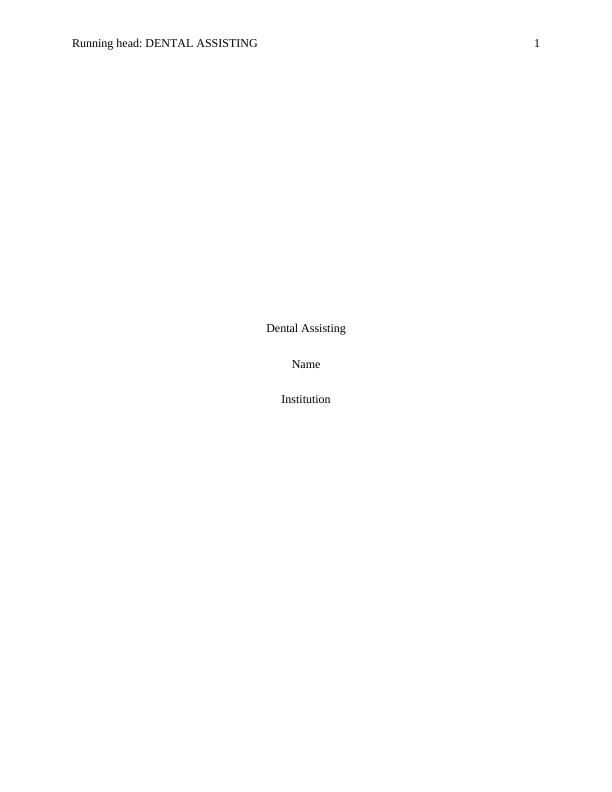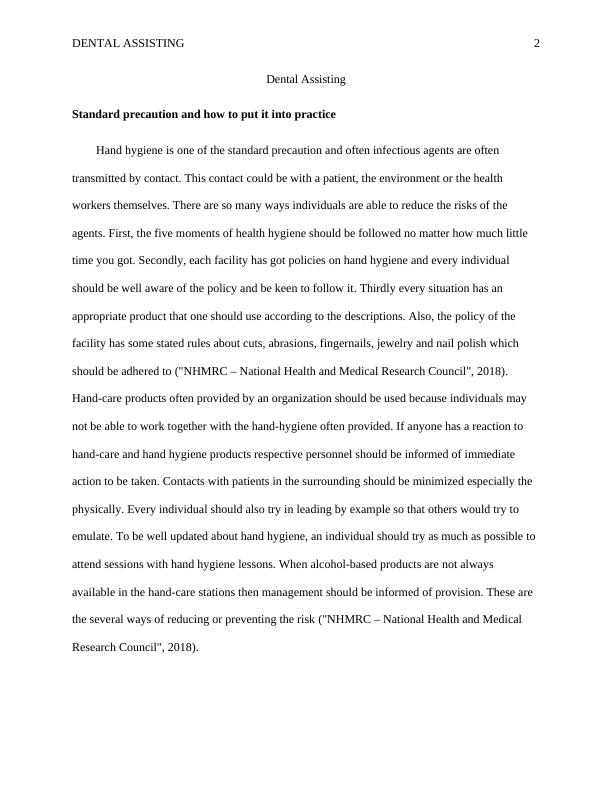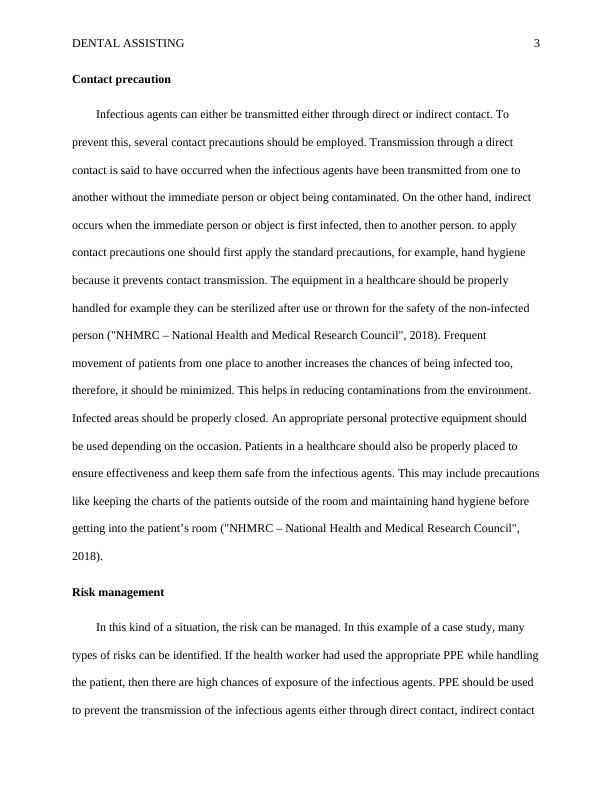Standard Precautions and Risk Management in Dental Assisting
This assignment is designed to give you greater understanding of the purpose of infection control in the healthcare workplace.
9 Pages1922 Words412 Views
Added on 2023-06-13
About This Document
This article discusses standard precautions and risk management in dental assisting. It covers topics such as hand hygiene, contact precautions, personal protective equipment (PPE), waste management, and the purpose of clean and contaminated zones. The article emphasizes the importance of following facility policies and attending hand hygiene sessions to prevent the transmission of infectious agents.
Standard Precautions and Risk Management in Dental Assisting
This assignment is designed to give you greater understanding of the purpose of infection control in the healthcare workplace.
Added on 2023-06-13
ShareRelated Documents
End of preview
Want to access all the pages? Upload your documents or become a member.
Methods of preventing cross infection
|8
|1245
|75
Assignment on Cross Infection pdf
|10
|2252
|61
Infection Control Manual Sample Assignment
|5
|707
|42
Infection Control - Assignment
|4
|1658
|430
Infection Prevention and Control Policies and Procedures
|9
|2378
|1240
Introduction to Communicable Disease
|10
|2167
|208



